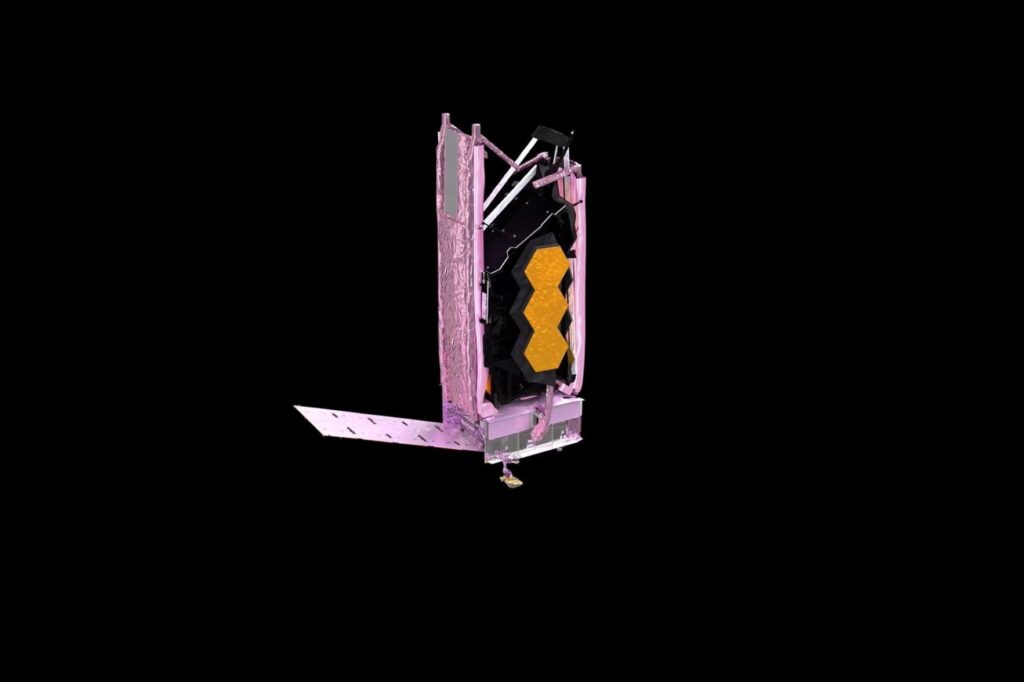Two days after the Christmas day launch, James Webb Space Telescope (JWST) is nearing the Moon’s orbit – and the most complex phase of its deployment.
The telescope is going to pass the orbit of the Moon (384,400 kilometers / 207,560 nautical miles) on it’s the third day after its launch, completing the first quarter of its month-long journey to the second Lagrange point.
At the beginning of the third day, the deployment of the sunshield is going to start. The process will last six days, through which NASA scientists will guide the unfolding and tensioning of its sunshield.
The structure consists of five layers of film, each as thick as human hair and with an area of approximately 150 square meters (1,600 square feet) – slightly smaller than the area of one wing of the Airbus A330.
As soon as the sunshield will be unfolded, the unfolding of Webb’s mirrors is going to begin, ending shortly before the telescope’s arrival to L2.
After a string of delays, JWST was launched on December 25, 2021, from the Guiana Space Centre aboard an Ariane 5 rocket. Following the successful launch and the separation of the main stage, Webb deployed its solar array and antenna assembly.
So far, all the steps were performed autonomously, but the deployment of the sunshield and the mirrors are going to be controlled from the ground.
With its sunshield and mirrors unfolded, JWST will orbit the Sun approximately 1.5 million kilometers (0.9 million miles) from the Earth, at the L2 point where the blue planet and the Sun are perfectly aligned. This way, the sunshield is going to protect the telescope from Earth’s electromagnetic radiation as well.
In development for three decades, JWST is a successor to the Hubble Space Telescope. According to NASA, it is approximately 100 times more powerful, and will work in the infrared spectrum, capturing the galaxies that are much farther away, and as a consequence, much older.
